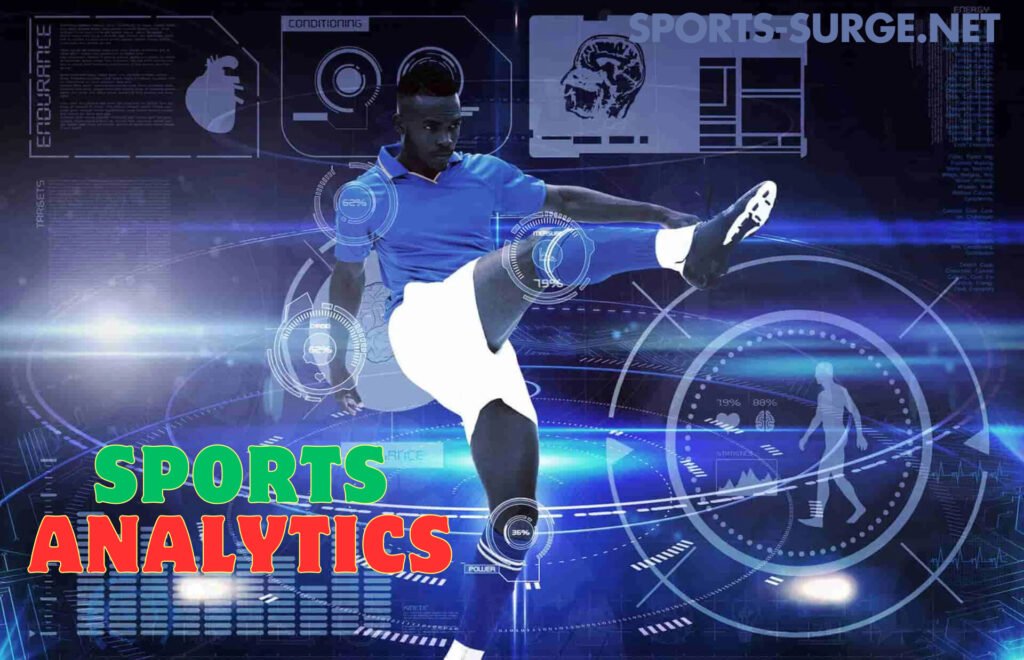Sports analytics has revolutionized the way athletes train, teams strategize, and fans engage with their favorite sports. By leveraging data-driven insights, stakeholders across the sports industry can make informed decisions that enhance performance, optimize operations, and elevate the overall experience. As of 2024, several key trends and technologies are shaping the future of sports analytics.
Table of Contents
ToggleThe Evolution of Sports Analytics
The journey of sports analytics began with the collection of basic statistics such as scores and player metrics. Over time, the integration of advanced statistical methods, data science, and artificial intelligence (AI) has transformed the field into a sophisticated discipline that influences nearly every aspect of sports. This evolution has enabled teams to gain a competitive edge by making data-informed decisions.
Emerging Trends in Sports Analytics

Artificial Intelligence and Machine Learning
AI and machine learning are at the forefront of sports analytics, enabling the processing of vast datasets to uncover patterns and insights that were previously unattainable. These technologies facilitate predictive modeling for player performance, injury prevention, and game strategy optimization. For instance, AI-driven models can analyze player movements to predict the likelihood of injuries, allowing for proactive interventions.
Prescriptive Analytics
Prescriptive analytics goes beyond predicting outcomes by recommending specific actions to achieve desired results. In 2024, 79% of sports professionals acknowledged that prescriptive analytics would be crucial for decision-making processes, particularly in areas like game strategy and player development.
Wearable Technology and Athlete Monitoring
Wearable devices equipped with sensors collect real-time data on various physiological and biomechanical parameters. This information is invaluable for monitoring athlete performance, managing training loads, and preventing injuries. Technologies such as GPS tracking vests and heart rate monitors provide insights that help in tailoring individualized training programs.
Virtual Reality (VR) Training
VR technology offers immersive training experiences by simulating realistic game scenarios. Athletes can practice skills and strategies in a controlled environment, enhancing decision-making and reaction times without the physical strain of traditional training methods. This approach also aids in mental preparation by allowing players to visualize and rehearse plays.
Growth of Technology in Women’s Sports
The increasing investment in women’s sports has led to the adoption of advanced analytics to enhance performance and engagement. In 2024, 80% of sports professionals believed that analytics would advance women’s sports, promoting greater equality and visibility. This trend is evident in the rise of women’s leagues and tournaments that utilize data-driven strategies to compete at higher levels.
Applications of Sports Analytics
Performance Enhancement
Teams utilize analytics to assess player performance, identify strengths and weaknesses, and develop targeted training regimens. For example, Major League Baseball (MLB) teams use Statcast data to analyze player movements, pitching speeds, and batting techniques, leading to improved game outcomes.
Injury Prevention and Recovery
By analyzing data on player workload and biomechanics, sports organizations can identify risk factors for injuries and implement preventive measures. Wearable technology provides real-time monitoring, allowing for timely interventions to reduce injury risks and optimize recovery protocols.
Fan Engagement and Experience
Analytics play a pivotal role in understanding fan behavior and preferences. By analyzing data from various touchpoints, sports organizations can create personalized experiences, enhance marketing strategies, and increase fan loyalty. For instance, the NBA’s collaboration with Microsoft through the NBA CourtOptix platform provides real-time game insights and interactive content, creating more personalized, immersive experiences for fans.
Strategic Decision-Making
Coaches and analysts use data to inform tactical decisions during games. By understanding opponents’ tendencies and evaluating in-game situations, teams can adjust strategies to increase their chances of success. Advanced metrics provide insights that go beyond traditional statistics, offering a deeper understanding of the game dynamics.
Case Studies

Catapult Sports
Catapult Sports, a leader in wearable technology for athlete monitoring, provides teams with real-time performance data through its GPS tracking and analytics platform. Teams like the Seattle Seahawks use Catapult’s technology to optimize training loads and reduce injury risks, thereby improving player performance over the long term.
Major League Baseball (MLB)
MLB teams utilize Statcast data to analyze player movements, pitching speeds, and batting techniques. This data helps coaches identify optimal strategies for pitchers and batters, leading to improved game outcomes.
Challenges in Sports Analytics
Despite the advancements, several challenges persist in the field of sports analytics:
Data Quality and Integration
Ensuring the accuracy and consistency of data from various sources is critical. Integrating disparate data types, such as biometric data and performance metrics, requires sophisticated systems and methodologies.
Ethical Considerations
The collection and use of personal data raise ethical concerns regarding privacy and consent. Establishing clear guidelines and obtaining informed consent from athletes are essential to address these issues.
Resistance to Change
Traditional mindsets within sports organizations can hinder the adoption of analytics. Overcoming skepticism and demonstrating the tangible benefits of data-driven approaches are necessary for widespread acceptance.
The Future of Sports Analytics

Integration of AI and Machine Learning
The role of artificial intelligence (AI) and machine learning will continue to expand in sports analytics. By automating data collection and analysis, AI enables teams to identify hidden trends and develop strategic insights quickly. Machine learning algorithms will become even more accurate in predicting outcomes, such as game results, player fatigue, and injury risks. As AI systems evolve, they will integrate more complex datasets, including psychological data, weather conditions, and opponent analysis, to offer highly refined decision-making tools.
Real-Time Data Analysis
The future of sports will witness a stronger emphasis on real-time data analysis. With advancements in Internet of Things (IoT) devices and faster data transmission (e.g., 5G networks), teams will receive actionable insights during live games. Coaches will be able to make in-the-moment adjustments, such as substitutions, changes in tactics, and injury prevention measures, based on instant data feeds.
Enhanced Fan Experience with Augmented Reality (AR)
Augmented reality (AR) will reshape how fans engage with sports. By merging analytics with AR technology, fans can access immersive real-time visuals and player statistics during games, both at the stadium and from home. For example, AR glasses or apps could overlay player performance metrics, such as sprint speed, shooting accuracy, or fatigue levels, during live matches. This will create an unparalleled fan experience that bridges the gap between entertainment and analytics.
Blockchain and Sports Analytics
Blockchain technology will play a role in sports analytics by ensuring transparency, data security, and accuracy. Blockchain-based platforms can track and verify athlete performance metrics, reducing the chances of data manipulation or errors. It will also facilitate athlete contracts, medical data management, and fan engagement through tokenized experiences like NFTs (non-fungible tokens) for exclusive data and statistics access.
Data Democratization
Sports analytics will become more accessible to fans, media, and smaller teams as the cost of data analytics platforms decreases. Open-source tools and cloud-based software will allow amateur athletes and grassroots teams to benefit from data insights, further democratizing the field. This trend will lead to better performance tracking and strategic decisions at all levels of sports.
Conclusion
Sports analytics has come a long way from basic statistical recording to becoming a transformative force in global sports. In 2024, the integration of advanced technologies like artificial intelligence, wearable devices, and real-time data analytics is empowering athletes, coaches, and organizations to make smarter decisions. These advancements are not only enhancing athletic performance but also reshaping fan engagement, injury prevention, and strategic planning.
Despite challenges such as data privacy concerns and resistance to change, the future of sports analytics looks promising. With ongoing innovation, data-driven decision-making will become an integral part of every sport, helping teams unlock new levels of success. As technology continues to advance, sports analytics will further bridge the gap between performance and precision, ensuring a fair, transparent, and competitive sports environment.
In short, the marriage of sports and analytics is not just a trend—it’s the future of the industry, and the game-changing possibilities are endless.
FAQs about Sports Analytics
What is sports analytics, and why is it important?
Sports analytics involves collecting, analyzing, and interpreting data to gain insights into athletic performance, team strategies, and player dynamics. It enables teams to make data-driven decisions, enhance performance, prevent injuries, and engage fans more effectively.
How is data collected and analyzed in sports analytics?
Data is gathered through various means, including wearable devices that monitor physiological metrics, video analysis for player movements, and IoT sensors tracking real-time performance. Advanced statistical methods and machine learning algorithms are then applied to interpret this data, providing actionable insights for teams and athletes.
What are the ethical considerations in sports analytics?
Key ethical concerns include data privacy, informed consent from athletes, and the potential for algorithmic bias. It’s crucial to handle personal data responsibly, ensuring transparency and fairness in its application to avoid misuse or unintended consequences.
How does sports analytics impact fan engagement?
Analytics enhance fan experiences by providing deeper insights into games and players through advanced statistics and visualizations. Interactive platforms allow fans to track player movements, evaluate game scenarios, and analyze team performance, fostering a more immersive and informed viewing experience.
What are the career opportunities in sports analytics?
The field offers various roles, including data analysts, performance analysts, and data scientists, all focusing on different aspects of sports data interpretation. A strong foundation in mathematics, statistics, and data science, combined with a passion for sports, is essential for success in this industry.
How is artificial intelligence (AI) utilized in sports analytics?
AI and machine learning are employed to process large datasets, uncover patterns, and make predictions regarding player performance, injury risks, and game strategies. These technologies enable more accurate and efficient analysis, leading to better decision-making in sports contexts.

